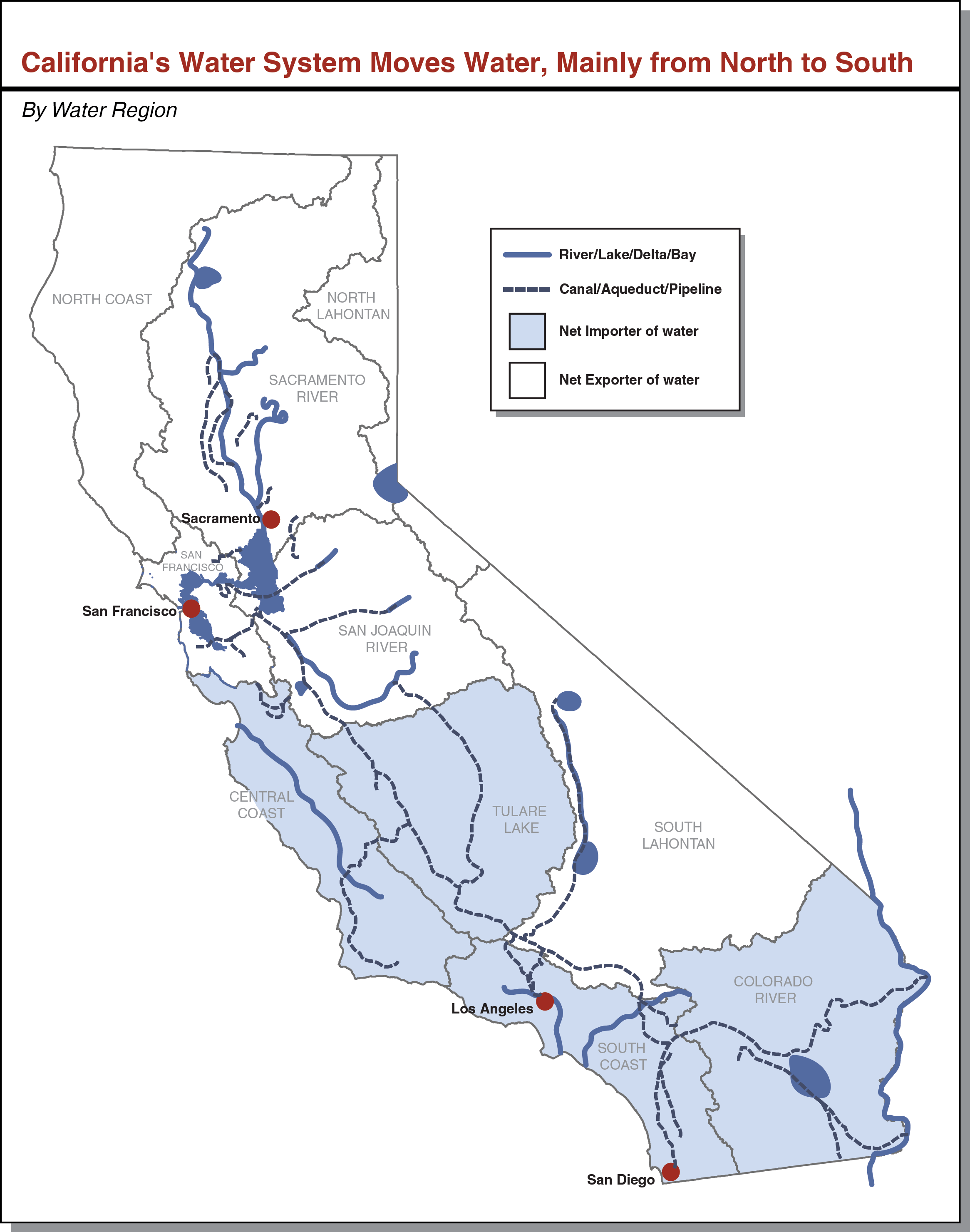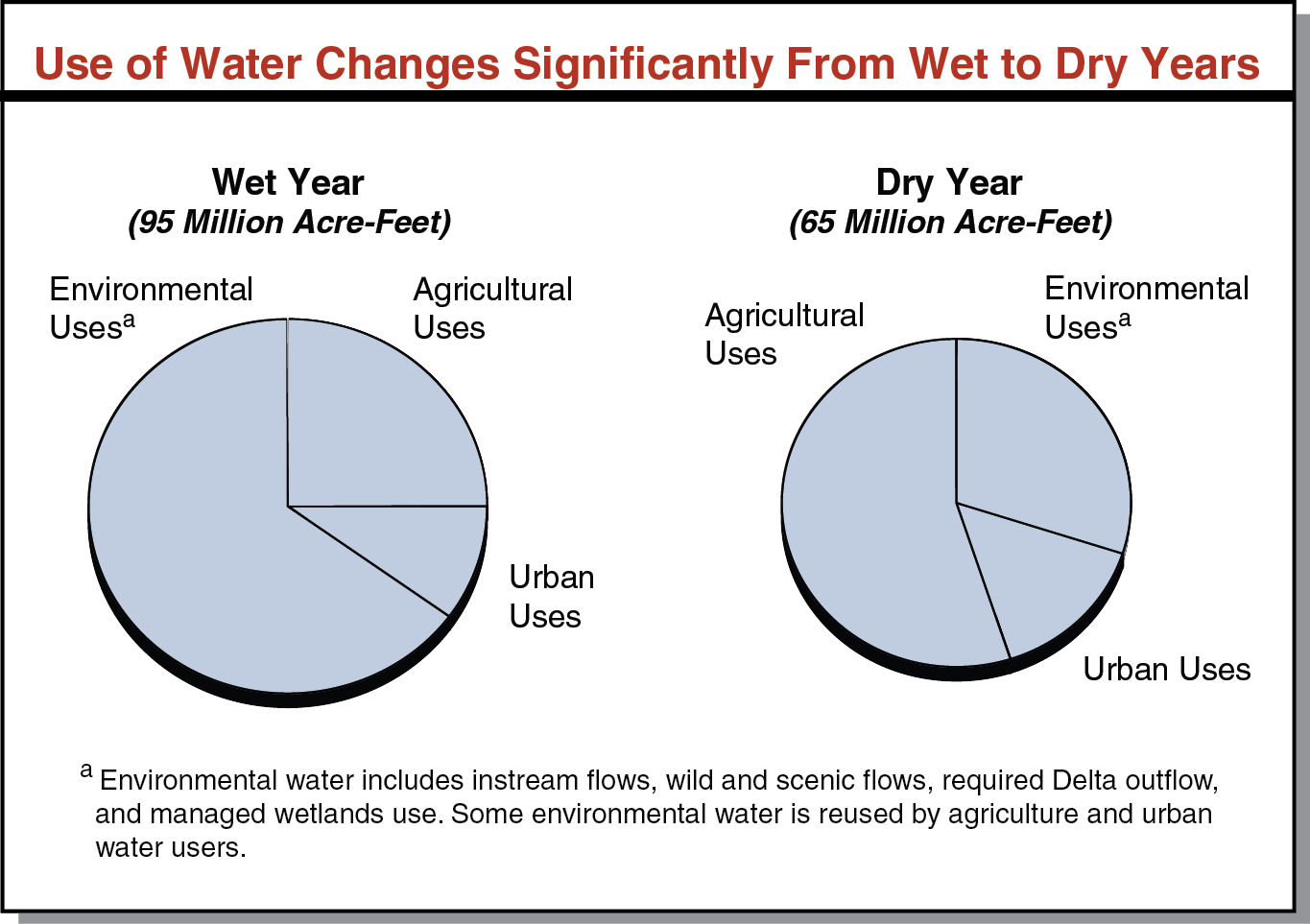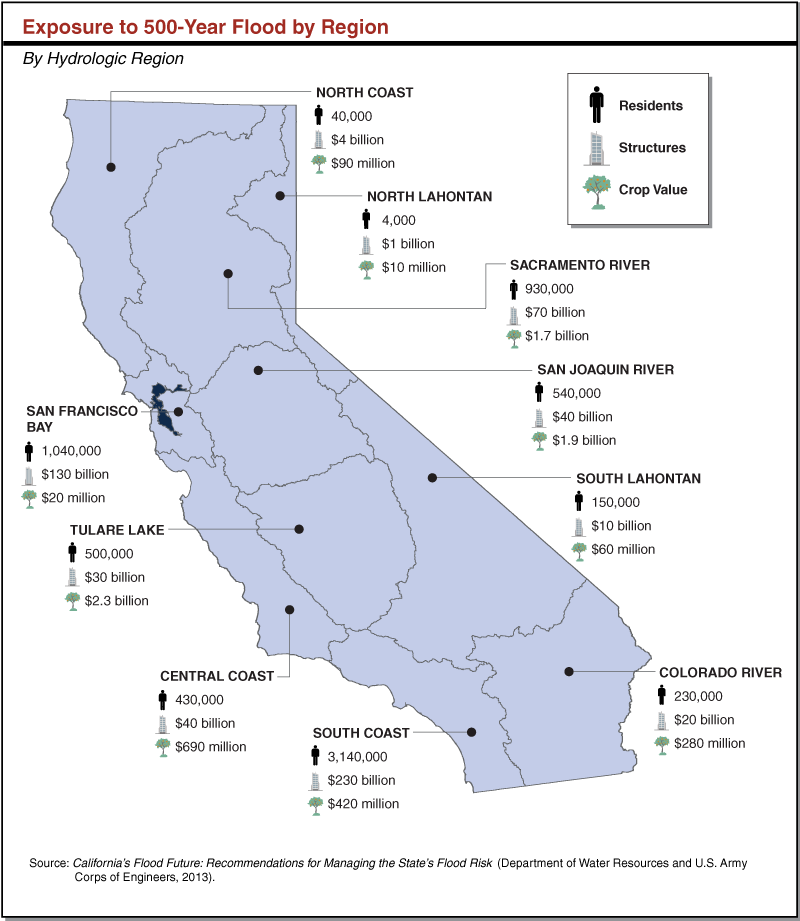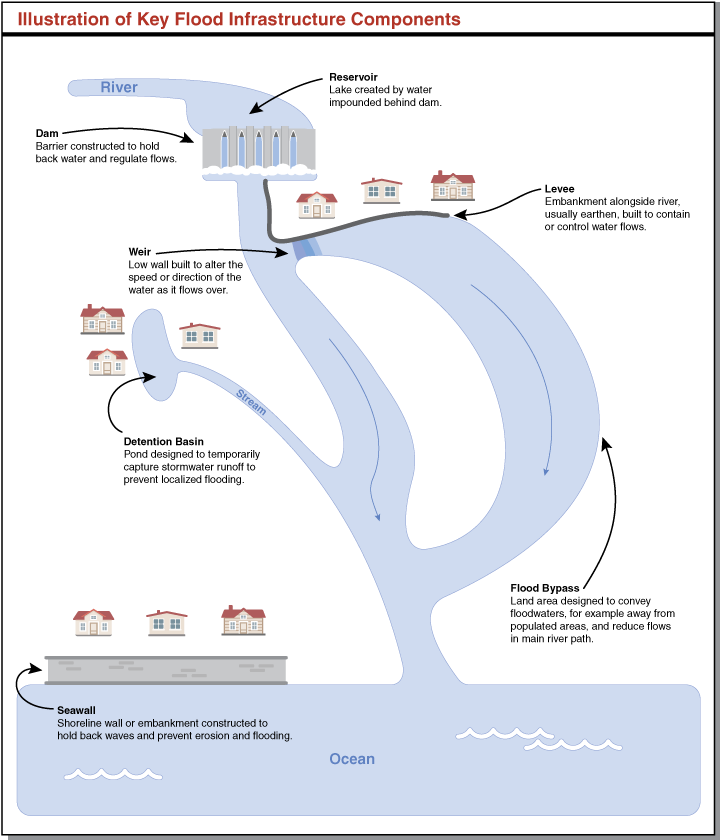Water
California’s water system is complex. This complexity can be seen in how the system is structured—with multiple sources of water that are interconnected in various ways. It is also evident in how the system is financed—using a variety of sources at the local, state, and federal level to meet the needs of urban and agricultural water users and the environment. This web page provides some "quick reference" tables and graphics that illustrate some key elements of California's water system.
On this page:
HISTORY AND MANAGEMENT
Many Entities Are Involved in Water Management
|
Responsibilities |
|||
|
Water Supply |
Water Quality |
Flood Control |
|
|
State Agencies |
|||
|
Department of Water Resources |
X |
X |
|
|
State Water Resources Control Board |
X |
X |
|
|
California Public Utilities Commission |
X |
X |
|
|
Colorado River Board |
X |
||
|
Delta Stewardship Council |
X |
X |
X |
|
Department of Pesticide Regulation |
X |
||
|
Department of Toxic Substances Control |
X |
||
|
Department of Conservation |
X |
||
|
Office of Environmental Health Hazard Assessment |
X |
||
|
Federal Agencies |
|||
|
Bureau of Reclamation |
X |
X |
|
|
Army Corps of Engineers |
X |
X |
|
|
Environmental Protection Agency |
X |
||
|
Geological Survey |
X |
X |
|
|
Other Entities |
|||
|
Cities and counties |
X |
X |
X |
|
Special districts |
X |
X |
X |
|
Tribal governments |
X |
X |
X |
|
Private water companies |
X |
||
For more information, please see our publication California’s Water: An LAO Primer
For more information, please see our publication Achieving State Goals for the Sacramento-San Joaquin Delta
Types of Water Systems in California
|
|
|
|
|
|
For more information, please see our publication Expanding Access to Safe and Affordable Drinking Water in California—A Status Update.
PRECIPITATION AND WATER USE
California's Precipitation is Highly Variable
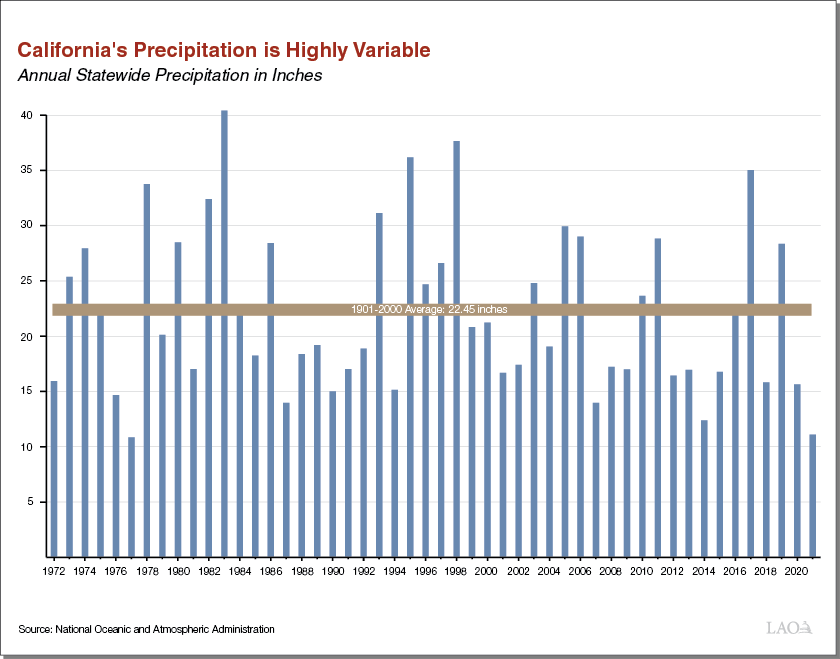
For more information, please see our publication California’s Water: An LAO Primer
FLOODS
For more information, please see our publication Managing Floods in California
GROUNDWATER
Implementation Timeline for Major Sustainable Groundwater Management Act (SGMA) Requirements

STATE BOND FUNDING
Water-Related General Obligation Bonds
1970-2018 (In Millions)
|
Year |
Proposition Number |
Title |
Amount Authorized |
|
1970 |
1 |
Clean Water Bond Law of 1970 |
$250 |
|
1974 |
2 |
Clean Water Bond Law of 1974 |
250 |
|
1976 |
3 |
California Safe Drinking Water Bond Law of 1976 |
175 |
|
1978 |
2 |
Clean Water and Water Conservation Bond Law of 1978 |
375 |
|
1982 |
4 |
Lake Tahoe Acquisitions Bond Act |
85 |
|
1984 |
2 |
California Safe Drinking Water Bond Law of 1984 |
75 |
|
1984 |
28 |
Clean Water Bond Law of 1984 |
325 |
|
1984 |
19 |
Fish and Wildlife Habitat Enhancement of 1984 |
85 |
|
1986 |
55 |
California Safe Drinking Water Bond Law of 1986 |
100 |
|
1986 |
44 |
Water Conservation and Water Quality Bond Law of 1986 |
150 |
|
1988 |
8 |
California Safe Drinking Water Bond Law of 1986 |
75 |
|
1988 |
70 |
California Wildlife, Coastal, and Park Land Conservation Act |
776 |
|
1988 |
83 |
Clean Water and Water Reclamation Bond Law of 1988 |
65 |
|
1988 |
82 |
Water Conservation Bond Law of 1988 |
60 |
|
1996 |
204 |
Safe, Clean Reliable Water Supply Act |
995 |
|
2000 |
13 |
Safe Drinking Water, Clean Water, Watershed Protection, and Flood Protection Act |
1,970 |
|
2000 |
12 |
Safe Neighborhood Parks, Clean Water, Clean Air, and Coastal Protection Bond act of 2000 |
2,100 |
|
2002 |
40 |
California Clean Water, Clean Air, Safe Neighborhood Parks, and Coastal Protection Act of 2002 |
2,600 |
|
2002 |
50 |
Water Security ,Clean Drinking Water, Coastal and Beach Protection Act of 2002 |
3,440 |
|
2006 |
1E |
Disaster Preparedness and Flood Protection Bond Act of 2006 |
4,090 |
|
2006 |
84 |
Safe Drinking Water, Water Quality and Supply, Flood Control, River and Coastal Protection Bond Act of 2006 |
5,388 |
|
2014 |
1 |
Water Quality, Supply, and Infrastructure Improvement Act of 2014 |
7,120a |
|
2018 |
68 |
Drought, Water, Parks, Climate, Coastal Protection, and Outdoor Access for All Act of 2018 |
4,100 |
|
Total |
$34,649 |
||
|
aProposition 1 also repurposed a total of $425 million from Proposition 84, Proposition 1E, Proposition 50, Proposition 13, Proposition 204, and Proposition 44. |
|||
For more information, please see the California Natural Resources Agency's bond accountability webpage.
Last Updated: December 2021

